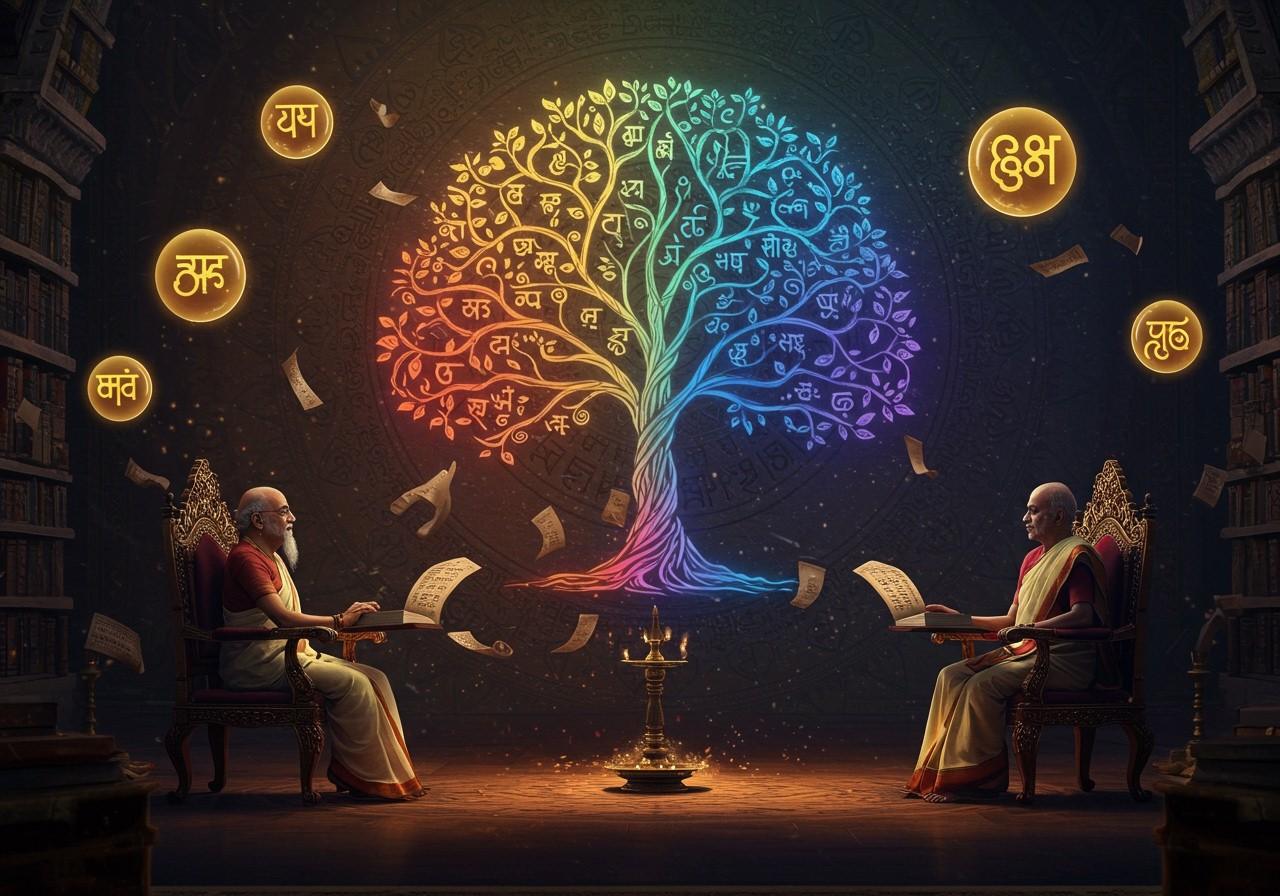
Tamil, one of the world’s oldest languages, boasts a rich cultural heritage deeply intertwined with Indian traditions. This article delves into the connections and comparisons between Tamil and other languages, such as English, Hindi, and Sanskrit. We’ll explore linguistic influences, shared vocabulary, and structural similarities, providing insights into how these languages interact and influence one another.
Tamil and English
Tamil and English share a fascinating relationship shaped by history and globalization. British colonialism introduced English to India, leading to the adoption of English words into Tamil vocabulary. Words like “curry” and “catamaran” are prime examples of this linguistic exchange. Today, especially in urban settings, English terms frequently intermingle with Tamil in everyday conversations. Globalization further accelerates this exchange, with Tamil-speaking communities in English-speaking countries contributing to bilingualism. While mastering English can be demanding for Tamil speakers, it unlocks numerous opportunities.
Tamil and Hindi
Tamil and Hindi, two of India’s major languages, have a complex relationship woven through centuries of interaction. Various dynasties and empires facilitated language exchange, resulting in similarities in script and phonetics. Shared cultural expressions and vocabulary are evident, particularly in classical music and dance. Tamil literature has influenced Hindi literature, and vice versa. Hindi cinema has popularized certain Tamil phrases, while some Hindi phrases have gained recognition in Tamil. Although learning Hindi can pose challenges for Tamil speakers, dedicated practice bridges the gap. Despite regional variations, mutual intelligibility between Tamil and Hindi speakers is achievable.
Tamil vs. Sanskrit
Tamil and Sanskrit, both ancient languages of significant cultural and religious importance, offer a compelling comparison. These languages, originating from different language families (Dravidian and Indo-European, respectively), exhibit distinct scripts, grammar, and phonetics. However, they do share vocabulary, notably in religious texts. Sanskrit’s influence on Tamil literature is undeniable, particularly in classical poetry and epics. Sanskrit also plays a role in Tamil rituals and religious practices. The modern-day relevance and usage of Sanskrit in Tamil-speaking regions remain a topic of discussion among scholars, with varying perspectives on the relationship between these two ancient tongues. Tamil, primarily spoken in South India, Sri Lanka, and Singapore, predates the arrival of Indo-Aryan languages in the region.
Cultural and Linguistic Influences
Tamil’s influence extends beyond individual language pairs, impacting the broader cultural and linguistic landscape. As a prominent member of the Dravidian language family, Tamil shares connections with other Dravidian languages like Telugu, Kannada, and Malayalam. Tamil has significantly influenced these languages, particularly through literature, music, and cinema. The global Tamil diaspora has spread the language to regions like Sri Lanka, Malaysia, and Singapore, influencing local languages. Tamil scholars and poets have enriched multilingual literature, contributing to a vibrant exchange of ideas and artistic expression. Tamil’s future appears bright as it continues to evolve and interact with other languages in a dynamic globalized world. It’s noteworthy that Telugu, another South Indian language, shows a greater influence from Sanskrit compared to Tamil.
How Poojn.in Helps You Navigate Regional Names for Sacred Items
At Poojn.in, we recognize that sacred items have diverse names across various Indian languages. We simplify your search by listing products with their names in multiple languages. For instance, Arjun bark is known by various names:
-
Arjuna Ela in Tamil
-
Arjuna Kottai in Malayalam
-
Arjunaru in Kannada
-
Nirmarjuna in Telugu
-
Arjuna in Hindi
Our product listings include these regional variations to help you find precisely what you need. You can use any of these names when searching on Poojn.in for authentic Arjun bark and other ritual items. Our multilingual approach extends to our entire catalog of puja items and ingredients, ensuring you can confidently select the correct items for your rituals, regardless of your preferred Indian language. Our customer service team is also available to assist you in multiple Indian languages. Visit Poojn.in today to explore our complete range of authentic puja items with clear regional language references.
Conclusion
Tamil’s enduring heritage and continued influence make it a captivating area of study. Its connections with other languages underscore the interconnectedness of cultures and the vital importance of preserving linguistic diversity. Understanding these relationships deepens our appreciation for the richness and beauty of our languages and traditions. Whether it’s the fusion of Tamil and English in urban areas, the historical links with Hindi, or the ancient connections with Sanskrit, each facet contributes to the vibrant tapestry of Tamil. As we embrace modernity, let’s also cherish and celebrate our linguistic roots.


